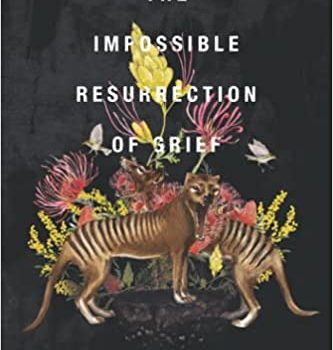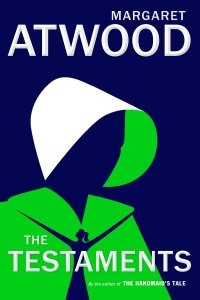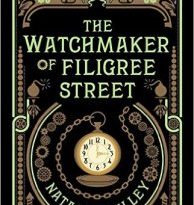Gary K. Wolfe Reviews The Impossible Resurrection of Grief by Octavia Cade
 The Impossible Resurrection of Grief, Octavia Cade (Stelliform Press 978-1-777091767, $14.99, 82pp, tp) May 2021.
The Impossible Resurrection of Grief, Octavia Cade (Stelliform Press 978-1-777091767, $14.99, 82pp, tp) May 2021.
Octavia Cade is a writer new to me, even though since 2016 she’s won three Sir Julius Vogel Awards, the national SF awards of New Zealand, and has published a fair amount of short fiction in Asimov’s, Clarkesworld, Strange Horizons, and elsewhere. Her new novella, The Impossible Resurrection of Grief, comes to us from Ontario’s small Stelliform Press, which focuses on climate change – appropriately, given Cade’s multifaceted approach to the problem in this surprisingly brief novella (surprising given the amount of territory it tries to cover). Cade, who has written a fair amount of horror as well as earning a doctorate in science communication, casts the central recurring question of her tale in terms that sound a lot like a tagline for a horror story: “Can you watch something die and let it die?” The general answer, which she suggests applies not only to the extinction of species and environmental depredation, but to the colonial histories of Australia and New Zealand, is essentially “that’s what we humans do.” In Cade’s near future, the Great Barrier Reef is all but gone, home only to a few species of jellyfish, and human-driven global extinctions are well underway.
Cade’s premise is that these disasters have led to an epidemic of something called the Grief, a cumulative cycle of depression and guilt that almost inevitably leads to suicide. Her narrator, a marine biologist named Ruby, distracts herself with her research on her beloved jellyfish, which are actually increasing in numbers because of their greater tolerance for climate change. Her colleague Marjorie, though, stops going to work, destroys her boat The Sea Witch and adopts its name as her own identity as she turns herself into a disconsolate recluse obsessed with amassing plastic bags. But if Marjorie succumbs to the Grief, her death leads Ruby to discover two other equally problematical responses to it. A package of mysterious letters from Marjorie, all addressed to a former professor, sends Ruby to a remote farmhouse in Tasmania, where the woman, whom she calls Granny, has undertaken to resurrect the extinct thylacines, or “Tasmanian tigers” (interestingly, a similar project was described by James Bradley in his Ghost Species last year). But Granny may have darker motives involving Ruby, and this middle section very nearly turns into a horror story. In the third section, the response to the Grief is not resurrection but robotics. Ruby’s husband, George, introduces her to an artist named Darren, whose idea is to create simulacra of wildlife such as birds, even releasing some into the wild (recalling Philip K. Dick’s robotic pets in Do Androids Dream of Electric Sheep).
The three major episodes of Cade’s novella are so different in tone and theme – though all seem credible responses, once you accept the notion of the Grief – that it’s a challenge for Cade to weave them together without some seams showing, while other intriguing plot elements, like Ruby’s apparently amicable ongoing divorce from her indigenous husband George (who adds a valuable perspective), are hardly developed at all. But there’s no denying that The Impossible Resurrection of Grief is both provocative and disturbing, and often quite powerful. I even found myself wondering if the idea of the Grief itself is optimistic, or pessimistic, or both. If climate change mitigation simply fails, will we at least be crippled by our sense of cumulative loss, as Cade suggests, or will we just watch things die and let them die, the way we seem to be doing so far?
Gary K. Wolfe is Emeritus Professor of Humanities at Roosevelt University and a reviewer for Locus magazine since 1991. His reviews have been collected in Soundings (BSFA Award 2006; Hugo nominee), Bearings (Hugo nominee 2011), and Sightings (2011), and his Evaporating Genres: Essays on Fantastic Literature (Wesleyan) received the Locus Award in 2012. Earlier books include The Known and the Unknown: The Iconography of Science Fiction (Eaton Award, 1981), Harlan Ellison: The Edge of Forever (with Ellen Weil, 2002), and David Lindsay (1982). For the Library of America, he edited American Science Fiction: Nine Classic Novels of the 1950s in 2012, with a similar set for the 1960s forthcoming. He has received the Pilgrim Award from the Science Fiction Research Association, the Distinguished Scholarship Award from the International Association for the Fantastic in the Arts, and a Special World Fantasy Award for criticism. His 24-lecture series How Great Science Fiction Works appeared from The Great Courses in 2016. He has received six Hugo nominations, two for his reviews collections and four for The Coode Street Podcast, which he has co-hosted with Jonathan Strahan for more than 300 episodes. He lives in Chicago.
This review and more like it in the June 2021 issue of Locus.
 While you are here, please take a moment to support Locus with a one-time or recurring donation. We rely on reader donations to keep the magazine and site going, and would like to keep the site paywall free, but WE NEED YOUR FINANCIAL SUPPORT to continue quality coverage of the science fiction and fantasy field.
While you are here, please take a moment to support Locus with a one-time or recurring donation. We rely on reader donations to keep the magazine and site going, and would like to keep the site paywall free, but WE NEED YOUR FINANCIAL SUPPORT to continue quality coverage of the science fiction and fantasy field.
©Locus Magazine. Copyrighted material may not be republished without permission of LSFF.








